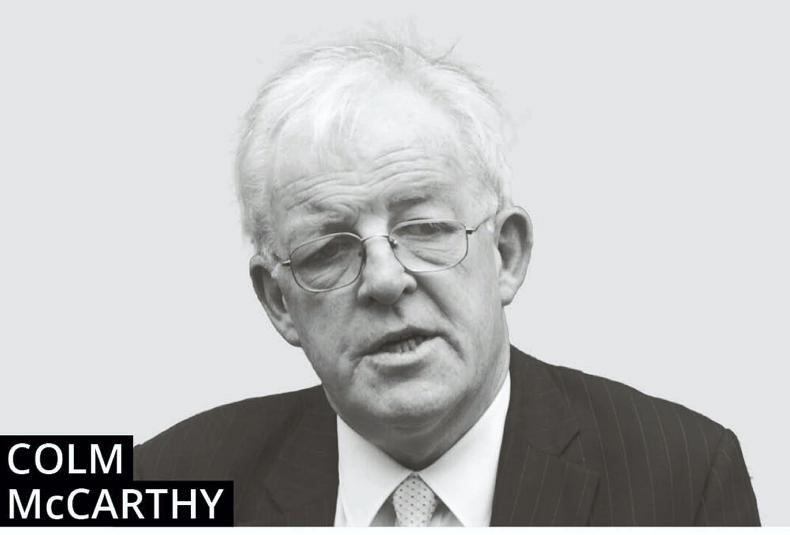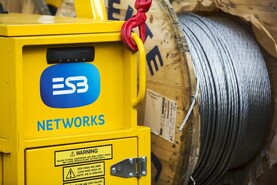The farm sector was deemed responsible for 38% of Ireland’s carbon emissions in 2023, according to preliminary estimates reported in recent days.
Total national emissions fell for the second year in a row, attributable mainly to declining emissions from electricity generation. Farming emissions in 2023 are reckoned to have been static or to have declined marginally. The figures for farming have risen significantly since the lifting of milk quotas in 2015, while emissions from electricity generation have been in long-term decline, reflecting the steady replacement of fossil fuels by renewables, mainly onshore wind.
These two sectors have something important in common – the figures for both ignore foreign trade.
The fall in emissions from the power sector in 2023 was in large part explained by a sharp rise in imports across inter-connectors from the UK. Ireland’s farm sector on the other hand is a big net exporter. In both cases, the fluctuations in emissions reflect the manner in which emissions are measured when national totals are computed.
Electricity imported from the UK counts against Britain’s carbon total, even when the consumption takes place in Ireland. The same is true in reverse with farm products. Irish farm output is mostly consumed somewhere else, but the emissions associated with production are counted against the Irish total.
Since the European Union has decreed national targets for emissions alongside a methodology for counting them, member states fret about their performance in keeping emissions on the downward trajectory implied by the targets. They should fret also about the methodology of measurement – the 2023 out-turn, for which definitive data will be released in mid-year, serves as a warning that the methodology is confused.
It mixes up consumption-based measures with figures based on production. If production is to be the benchmark, how come Saudi Arabia does not get debited with Ireland’s consumption of oil products, since they are not produced here? Because it would be ridiculous.
It makes perfect sense to measure national emissions by consumption, and to produce wherever it is efficient to do so.
The allocation of national targets combined with production-based measurement has the potential to distort international trade and the EU has recently responded to the dangers of ‘carbon leakage’, with proposals for compensating measures under the CBAM scheme; the Carbon Border Adjustment Mechanism. Imports from countries with weaker carbon mitigation policies than Europe will be hit with countervailing tariffs.
In the meantime, it makes no sense to be exporting electricity, and the reported Irish figures for 2023 look good because the UK has chosen to send some electricity in our direction at some cost to its own carbon figures.
The lesson is clear – your figures can look better or worse when the carbon debit is related to production rather than consumption.
Data centres
Ireland is not well placed to be offering electricity exports since generating capacity is tight. It has become very difficult to get planning consents for onshore wind. Offshore wind is a long way off and may not be financially viable if experience in the North Sea is a guide.
But, curiously, the country is now in the electricity exporting business, and not by design.
Data centres use largely imported equipment and very little labour, to export electricity, the major component of their value added.
Ireland is hosting vast amounts of data for users in other countries, several of which have policies to discourage new data centres.
Including units under construction and planned, there will shortly be 100 data centres in Ireland, some smaller and long established, some modern and far larger.
Eirgrid expects that it will soon consume almost 20% of Ireland’s power generation, versus a European average of around 3%. In effect, Ireland has chosen to host vast amounts of data for users in other countries, several of which have begun to discourage new data centres because of worries about generation capacity and the adequacy of power grids.
The Industrial Development Authority (IDA) has been an enthusiastic supporter of data centre development, arguing that it helps tech companies here. But nobody else in Europe seems to be following their lead.
Sectors with high measured emissions, due to exports, should be alert to the risk that extra pressure will be applied because of the failure to meet aggregate national targets.
The European average for emissions from agriculture is about 10%.
The Irish figure is 38% and not because the Irish appetite for food products is four times the EU level. Most product is exported, reflecting advantages of soil and climate.
The farm organisations have been remiss in their willingness to embrace this bloated 38% figure, a reflection of the methodology of measurement. They should be critics of the measurement methods and of the over-enthusiasm of the IDA for data centres.






 This is a subscriber-only article
This is a subscriber-only article










SHARING OPTIONS: